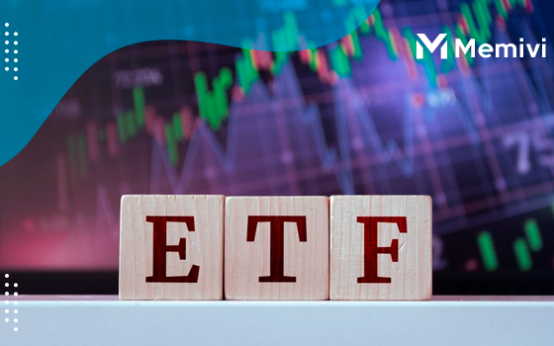
They are a popular investment choice for those who are looking for a low-risk, fixed-income investment option. However, with so many short-term bond ETFs to choose from, it can be overwhelming to navigate the market. That’s why we’ve put together this comprehensive guide to help you unveil the best short-term bond ETFs currently available. We’ll look at the performance, fees, and overall reputation of each ETF to help you make an informed decision about which one is right for you.
So, whether you’re new to investing or a seasoned pro, read on to discover the best short-term bond ETFs available.
Introduction to short-term bond ETFs and their benefits
Short-term bond ETFs have gained significant popularity among investors in recent years. These investment vehicles offer an attractive alternative to traditional bond investments, providing investors with a range of benefits that make them a compelling option in today’s market.
First and foremost, let’s define what short-term bond ETFs are. ETF stands for Exchange-Traded Fund, which is a type of investment fund traded on stock exchanges, much like individual stocks.
Short-term bond ETFs, as the name suggests, invest in a diversified portfolio of short-term fixed-income securities, such as government and corporate bonds, with relatively shorter maturities.
One of the key benefits of short-term bond ETFs is their ability to provide investors with a steady stream of income. Since these ETFs invest in bonds with shorter maturities, they tend to offer higher yields compared to longer-term bonds. This makes them an attractive option for income-focused investors who are seeking regular cash flow without taking on excessive risk.
Furthermore, short-term bond ETFs offer greater flexibility and liquidity compared to individual bonds. Unlike individual bonds, which may have minimum investment requirements and limited trading volumes, ETFs can be bought and sold throughout the trading day at market prices. This liquidity allows investors to easily adjust their positions and take advantage of market opportunities.
Factors to consider when choosing a short-term bond ETF
When it comes to selecting the best short-term bond ETFs, there are several factors that should be taken into consideration. These factors play a crucial role in determining the potential returns, risk levels, and overall suitability of the ETF for your investment strategy. Here are some key factors to consider:
- Duration: One of the most important factors to assess is the duration of the short-term bond ETF. Duration measures the sensitivity of the ETF’s price to changes in interest rates. Generally, shorter duration ETFs are less sensitive to interest rate fluctuations, making them suitable for investors seeking lower risk and stability.
- Credit Quality: Another crucial aspect to evaluate is the credit quality of the bonds held in the ETF’s portfolio. Credit ratings assigned by reputable agencies such as Moody’s or Standard & Poor’s can provide insights into the creditworthiness of the underlying bonds. Higher-rated bonds tend to offer lower yields but come with lower default risks, while lower-rated bonds typically offer higher yields but carry higher default risks.
- Expense Ratio: The expense ratio represents the annual fee charged by the ETF provider for managing the fund. This fee directly impacts your investment returns, so it’s important to consider an ETF with a reasonable expense ratio. Generally, ETFs with lower expense ratios are more cost-effective and can potentially generate higher returns.
- Liquidity: Liquidity is a crucial factor to ensure smooth trading and efficient execution of buy or sell orders. Highly liquid ETFs tend to have tight bid-ask spreads, minimizing the trading costs for investors. It is advisable to choose ETFs that have sufficient average daily trading volumes and assets under management to ensure adequate liquidity.
- Yield: The yield offered by the short-term bond ETF is an important consideration, especially for income-focused investors. The yield reflects the income generated by the ETF’s underlying bonds and can vary depending on the prevailing interest rates and credit quality of the bonds held.
By carefully assessing these factors, investors can make more informed decisions when choosing the best short-term bond ETFs that align with their investment goals, risk tolerance, and overall portfolio strategy. Remember to conduct thorough research, compare different options, and consult with a financial advisor if needed, to make the most suitable investment choices.
Top short-term bond ETFs in the market: a comparison

When it comes to investing in short-term bonds, exchange-traded funds (ETFs) have gained significant popularity among investors. These funds offer a convenient way to gain exposure to a diversified portfolio of short-term bonds, providing stability and potential income. In this section, we will compare some of the top short-term bond ETFs in the market, helping you make an informed investment decision.
- Vanguard Total Bond Market Index Fund: This ETF has consistently delivered solid returns with low volatility, making it an attractive option for conservative investors. It focuses on high-quality, investment-grade bonds with relatively short maturities, reducing interest rate risk. Additionally, the fund has a low expense ratio, making it cost-effective for investors.
- JPMorgan Ultra-Short Income ETF (JPST): This ETF takes a slightly different approach by incorporating active management strategies. The fund aims to outperform its benchmark index by employing various techniques, such as duration management and credit selection. This active approach can potentially enhance returns but comes with slightly higher expenses.
- VanEck IG Floating Rate ETF (FLTR): For investors seeking tax advantages, municipal bond ETFs are worth considering. VanEck IG Floating Rate ETF (FLTR): focuses on short-term municipal bonds issued by state and local governments. As these bonds are tax-exempt at the federal level, they provide an attractive option for investors in higher tax brackets.
- SPDR Bloomberg 1-3 Month T-Bill ETF (BIL): Investors looking for exposure to short-term corporate bonds can consider SPDR Bloomberg 1-3 Month T-Bill ETF (BIL). This fund primarily holds investment-grade corporate bonds with shorter maturities. It offers a higher yield compared to government or municipal bond ETFs, but with slightly more credit risk.
- iShares Short-Term National Muni Bond ETF (SUB): If safety is your top priority, iShares Short-Term National Muni Bond ETF (SUB) focuses exclusively on short-term U.S. Treasury bonds. These bonds are considered the safest investment in the fixed-income market, backed by the full faith and credit of the U.S. government. This ETF provides a stable income stream and acts as a hedge during times of market volatility.
It’s important to note that before investing in any ETF, you should carefully consider your investment objectives, risk tolerance, and consult with a financial advisor if needed. Each ETF has its own unique characteristics, and understanding them will help you align your investment strategy with your financial goals.
Analyzing the expense ratios and yields of different short-term bond ETFs
When it comes to investing in short-term bond ETFs, it is crucial to carefully analyze their expense ratios and yields. These factors play a significant role in determining the overall performance and potential returns of these investment vehicles.
Expense ratios refer to the fees charged by the ETF provider for managing the fund. It is essential to consider these costs as they directly impact your investment returns.
Generally, lower expense ratios are favorable as they can help maximize your overall returns.
However, it is essential to strike a balance between low expenses and the quality of the ETF in terms of portfolio composition and management expertise.
Yields, on the other hand, are a measure of the income generated by the ETF’s underlying bonds. They represent the interest payments received by investors and are often expressed as a percentage of the ETF’s net asset value (NAV).
Higher yields are generally desirable as they indicate the potential for greater income. However, it is important to consider the risk associated with higher yields, as they might be a result of lower credit quality or longer maturities.
Final Thoughts
Overall, the aforementioned ETFs offer compelling options for investors seeking short-term bond exposure. Whether you prioritize stability, income, or a balance between the two, these ETFs can help navigate the market and potentially enhance your investment returns. As always, it is crucial to conduct thorough research and due diligence before making any investment decisions.


 Inheriting a Windfall: Essential Steps to Secure Your Financial Future <p class='sec-title' style='line-height: normal; font-weight: normal;font-size: 16px !important; text-align: left;margin-top: 8px;margin-bottom: 0px !important;'> It's important to remember that the way you handle this money can have a significant impact on your financial future. </p>
Inheriting a Windfall: Essential Steps to Secure Your Financial Future <p class='sec-title' style='line-height: normal; font-weight: normal;font-size: 16px !important; text-align: left;margin-top: 8px;margin-bottom: 0px !important;'> It's important to remember that the way you handle this money can have a significant impact on your financial future. </p>  7 Best Bitcoin ETFs <p class='sec-title' style='line-height: normal; font-weight: normal;font-size: 16px !important; text-align: left;margin-top: 8px;margin-bottom: 0px !important;'> With the rise of Bitcoin and other cryptocurrencies, investors are looking for ways to invest in this new and exciting asset class. </p>
7 Best Bitcoin ETFs <p class='sec-title' style='line-height: normal; font-weight: normal;font-size: 16px !important; text-align: left;margin-top: 8px;margin-bottom: 0px !important;'> With the rise of Bitcoin and other cryptocurrencies, investors are looking for ways to invest in this new and exciting asset class. </p>  Navigating Stability: Discover the Top 10 Long-Term Bond ETFs <p class='sec-title' style='line-height: normal; font-weight: normal;font-size: 16px !important; text-align: left;margin-top: 8px;margin-bottom: 0px !important;'> Investing in long-term bond ETFs can be an excellent way to add stability to your investment portfolio. Learn more. </p>
Navigating Stability: Discover the Top 10 Long-Term Bond ETFs <p class='sec-title' style='line-height: normal; font-weight: normal;font-size: 16px !important; text-align: left;margin-top: 8px;margin-bottom: 0px !important;'> Investing in long-term bond ETFs can be an excellent way to add stability to your investment portfolio. Learn more. </p>